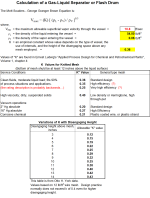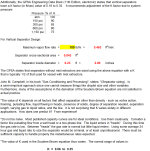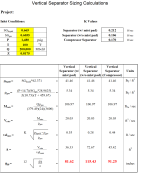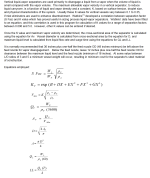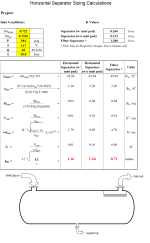Liquid Vapor Separator
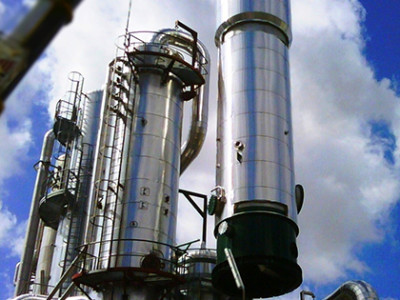
Description
In a liquid-vapor separation vessel, there are typically three stages of separation. The first stage, primary separation, uses an inlet diverter to cause the largest droplets to impinge by momentum and then drop by gravity. The next stage is gravity separation of smaller droplets as the gas flows through the vapor disengagement section of the separator. The final stage is mist elimination, where the smallest droplets are coalesced on an impingement device, such as a mist pad or vane pack, followed by gravity settling of the larger formed droplets. In vessels like flare knockout drums, we are primarily concerned with gravity separation since they typically have no coalescing internals, such as mist pads.
A liquid-vapor separator, also known as a gas-liquid separator or a knockout drum, is a device used in various industrial processes to separate a mixture of liquid and vapor phases. The separator works based on the differences in the physical properties of the liquid and vapor phases, such as density, allowing the two phases to be separated through gravity settling, centrifugal force, or other methods. Here's an overview of how a liquid-vapor separator works:
-
Inlet stream: The inlet stream, which contains both liquid and vapor phases, enters the separator. The inlet may be designed to minimize turbulence, allowing for better separation of the phases.
-
Gravity settling: As the mixture enters the separator, the liquid and vapor phases start to separate due to their different densities. The denser liquid droplets tend to settle downward under gravity, while the lighter vapor phase rises.
-
Momentum reduction: The separator may have internal devices or baffles to help reduce the momentum of the incoming mixture and promote the separation of liquid and vapor phases. The baffles can also help to capture and coalesce smaller liquid droplets, making them easier to separate from the vapor.
-
Mist elimination: In some designs, the separator may include a mist eliminator or a demister pad, which is a mesh-like structure or a series of vanes that the vapor phase passes through. The mist eliminator helps to capture any remaining liquid droplets carried by the vapor, further enhancing the separation efficiency.
-
Liquid collection: As the liquid phase settles to the bottom of the separator, it is collected and removed through an outlet, typically located at the lowest point of the separator. The liquid outlet may be equipped with a level control system to maintain the desired liquid level inside the separator.
-
Vapor outlet: The vapor phase, now separated from the liquid phase, exits the separator through a vapor outlet located at the top of the separator.
Liquid-vapor separators can be found in a wide range of applications, such as in oil and gas production, chemical processing, air compression systems, and steam generation systems. The specific design and operating parameters of a liquid-vapor separator will depend on the nature of the process and the specific requirements of the application.
Calculation Preview
Full download access to any calculation is available to users with a paid or awarded subscription (XLC Pro).
Subscriptions are free to contributors to the site, alternatively they can be purchased.
Click here for information on subscriptions.

